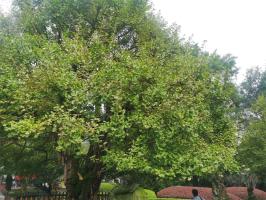How Does Planting Trees Help
Planting trees is one of the most powerful ways to combat climate change and protect the environment. Trees play a crucial role in reducing global warming, preserving biodiversity, and improving air and water quality.
Reduces Carbon Dioxide
One of the most essential benefits of planting trees is its ability to help reduce carbon dioxide in the atmosphere. Carbon dioxide is one of the leading causes of global warming, and the world's forests can store and absorb large amounts of carbon dioxide. Trees absorb carbon dioxide through photosynthesis, a natural process that converts carbon dioxide into oxygen, and stores carbon in the form of wood, leaves, and roots. By planting trees, individuals and communities can help reduce carbon dioxide emissions, mitigate climate change, and restore balance to the planet's delicate ecosystem.
Preserves Biodiversity
Planting trees is essential for preserving biodiversity and protecting endangered species. Trees provide habitat and food for many animal species, from butterflies to birds to mammals. Deforestation and habitat loss are significant threats to biodiversity and the survival of many species. By planting trees and protecting forests, we can help support the intricate web of life on our planet and prevent the extinction of many species.
Improves Air Quality
Trees are natural air filters that remove pollutants and improve air quality. They absorb harmful chemicals such as nitrogen dioxide, sulfur dioxide, and ozone and release oxygen into the air. According to the United Nations, one mature tree can provide enough oxygen for up to ten people for a year. Trees can also help reduce noise pollution by acting as a sound buffer and absorbing sound waves. By planting trees, we can help improve air quality and create a healthier living environment.
Restores Water Cycles
Forests play a critical role in the water cycle and the availability of fresh water. Trees absorb and store rainwater through their roots, which helps replenish aquifers and prevent soil erosion. This stored water is slowly released back into the atmosphere through evaporation and transpiration, which helps regulate the climate and create moisture in the air. Additionally, deforestation and land use change can disrupt local hydrological cycles, leading to droughts, floods, and water scarcity. By planting trees, we can help restore the natural water cycles and ensure the availability of fresh water for future generations.
Conclusion
Planting trees is a simple yet powerful way to make a positive impact on the environment and combat climate change. The benefits of trees are numerous, from reducing carbon dioxide and preserving biodiversity to improving air and water quality. By working together to plant trees and protect forests, we can create a more sustainable future for ourselves and the planet.

 how many times do yo...
how many times do yo... how many planted tre...
how many planted tre... how many pine trees ...
how many pine trees ... how many pecan trees...
how many pecan trees... how many plants comp...
how many plants comp... how many plants can ...
how many plants can ... how many plants and ...
how many plants and ... how many pepper plan...
how many pepper plan...






























